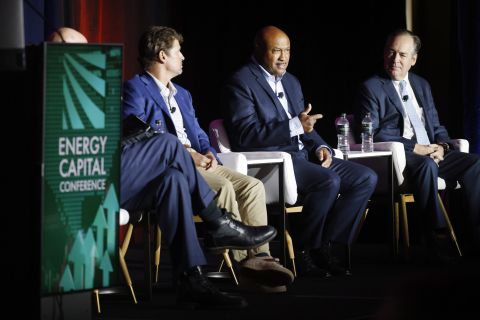
Pinedale-exposed companies were top performers the week of Aug. 9 followed by companies with exposure to the Cana (a Woodford shale), while companies with exposure to the Gulf of Mexico Shelf and Piceance were the weakest performers, according to research firm Dahlman Rose & Co.
Also, as the stock market turned more negative, the larger, lower debt names also reached Outperform status, according to vice president Nicholas P. Pope, lead analyst in the Dahlman Rose research note released on Aug. 16.
Following the presumed plugging of the Macondo deepwater well, for the first time in the past four weeks the deepwater and shallow water-focused Gulf operators finally moved out of the top of the performance tables this past week.
Pope says, “While the Macondo well seems to be plugged, the relief wells should help put a couple extra layers of redundancy in place, but likely will not trigger any significantly movement in the stocks.”
Due to a slowing of market headlines—and incoming questions—regarding the Gulf, interest is shifting away from the region for the time being, according to Pope.
“Market negativity seemed to drive outperformance in safer names—low debt and larger market cap,” he says.
Dahlman Rose’s E&P group features 12 upstream companies whose industry actions are covered by the research firm. The group currently consists of Arena Resources Inc. (NYSE: ARD); Cimarex Energy Co. (NYSE: XEC); Concho Resources, Inc. (NYSE: CXO); Denbury Resources Inc. (NYSE: DNR); Energy XXI (Nasdaq: EXXI); Exco Resources Inc. (NYSE: XCO); Mariner Energy Inc. (NYSE: ME); McMoRan Exploration Co. (NYSE: MMR); Petrohawk Energy Corp. (NYSE: HK); Plains Exploration & Production Co. (NYSE: PXP); Range Resources Corp. (NYSE: RRC); Southwestern Energy Co. (NYSE: SWN); Ultra Petroleum Corp. (NYSE: UPL); and XTO Energy Inc. (NYSE: XTO).
The oil group, consisting of companies that are heavily weighted toward oil, outperformed the gas growth group by 150 basis points this past week, while the median performance for the broad E&P group decreased 6.6%
Pope says the oily group decreased 5.1% while the gas growth group decreased 6.5%. The prompt month oil contract delivery, consisting of the September Nymex futures prices, decreased 6.5%, while the prompt month gas contract decreased 3%.
The market seems to have shifted towards simpler metrics of safety this week despite oil names outperforming gas names, according to Pope.
The research firm’s top two quintile of performers had a debt-to-total-cap ratio of 17%, while the bottom two quintiles had a debt-to-total-cap ratio of 30%. Also, the median market cap of the top two performing quintiles was $9.6 billion, while the bottom two performing quintiles had a median market cap of $1.6 billion.
Recommended Reading
Dividends Declared (Sept. 30 - Oct. 11, 2024)
2024-10-11 - Here is a compilation of dividends and distributions declared from select upstream, midstream and service and supply companies from Sept. 30 to Oct. 11.
Post Oak Backs New Permian Team, But PE Faces Uphill Fundraising Battle
2024-10-11 - As private equity begins the process of recycling inventory, likely to be divested from large-scale mergers, executives acknowledged that raising funds has become increasingly difficult.
Delek Logistics Partners Raises $166MM in Offering to Pay Debt
2024-10-11 - Delek Logisitics Partners closed an offering of 4.42 million common units to generate gross proceeds of $166 million.
Citgo Auction in Jeopardy as Venezuela Bondholders Pursue Parallel Claims
2024-10-11 - The court cases have increased uncertainty over which company is best positioned to take over the seventh-largest U.S. refiner Citgo Petroleum.
Quantum’s VanLoh: New ‘Wave’ of Private Equity Investment Unlikely
2024-10-10 - Private equity titan Wil VanLoh, founder of Quantum Capital Group, shares his perspective on the dearth of oil and gas exploration, family office and private equity funding limitations and where M&A is headed next.
Comments
Add new comment
This conversation is moderated according to Hart Energy community rules. Please read the rules before joining the discussion. If you’re experiencing any technical problems, please contact our customer care team.




